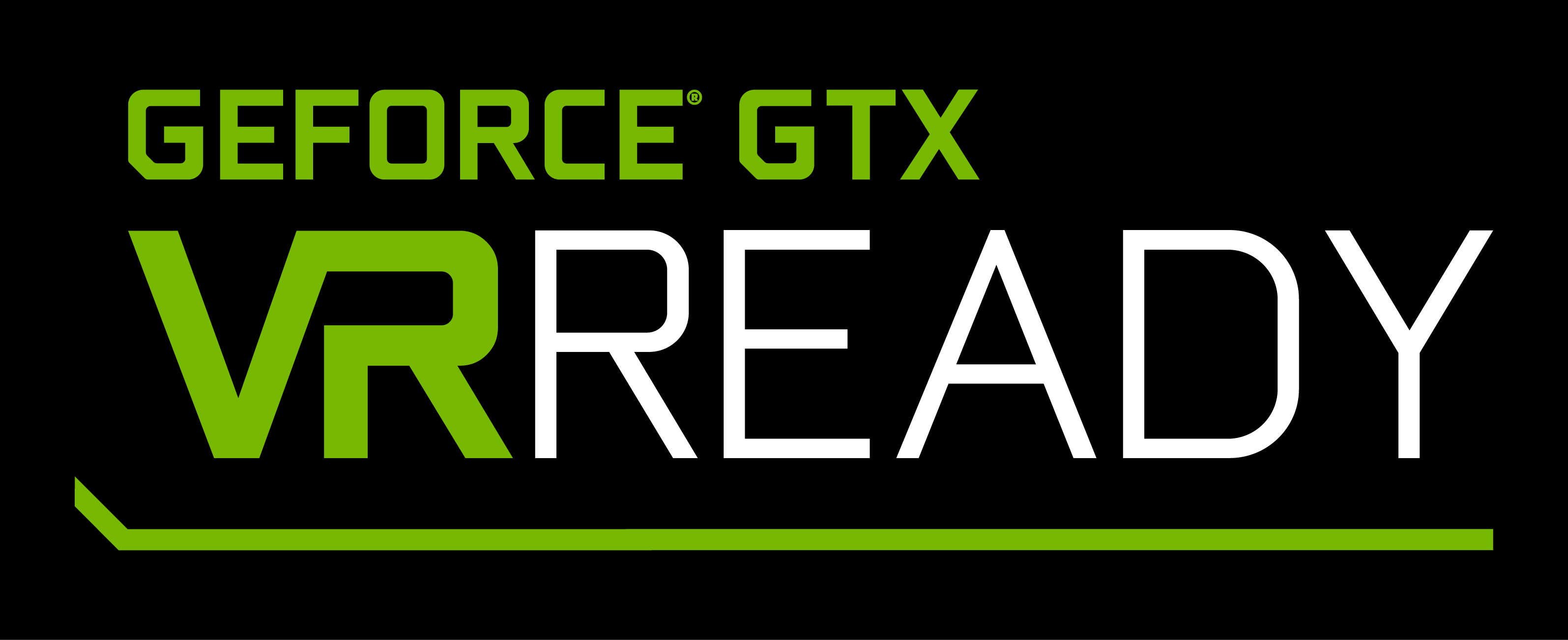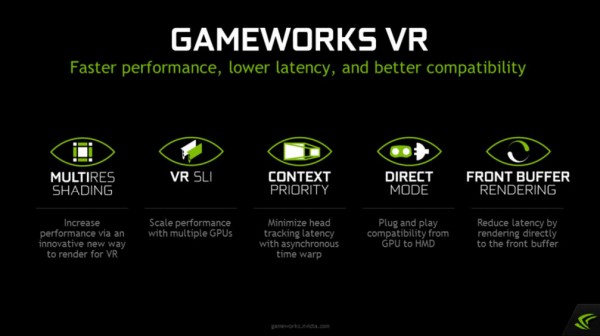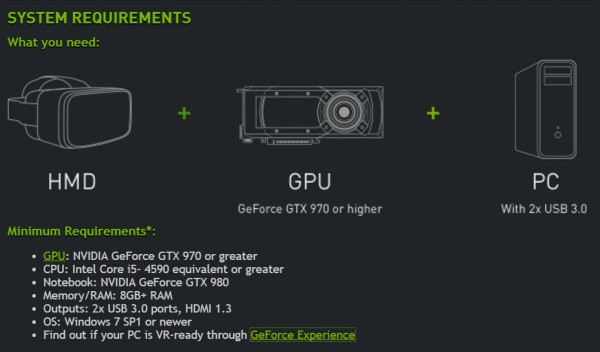Nvidia has earlier today announced its GeForce GTX VR Ready program. The aim of the program is to equip high-end Nvidia GPUs with the capability of generating an optimal VR experience. It’s no surprise that Nvidia is preparing its GPUs for VR technology, since consumer VR headsets are expected to be the standout technology this year.
Nvidia has partnered with several PC and laptop manufacturers along with add-in card providers in order to achieve the goals of the GeForce GTX VR Ready program. Generally, Nvidia aims to reduce the confusion that some consumers might have regarding what piece of hardware should be used along with VR headsets. Prior to the announcement of the VR program, Nvidia launched the GameWorks VR and DesignWorks VR technologies that will enable Nvidia GPUs to have optimal performance for VR gaming.
According to Nvidia, there are several things that consumers need to take note before venturing into VR gaming. Firstly, VR gaming requires the GPU to produce up to seven times the required performance output when compared against standard non-VR gaming. This is due to the need for graphics cards to deliver frame rate – above 90fps at minimum – for two separate and simultaneous image output.
Speaking of performance, Nvidia has provided consumers with the required system requirements to optimally run consumer VR headsets. Firstly, the GPU that is needed to run VR games are the GTX 970, GTX 980, GTX 980 Ti and of course, the GTX Titan X. Next, the minimum required CPU would be the Intel Core i5-4590. Surprisingly, Nvidia mentioned that only 8GB of RAM is required to optimally run VR games. Other requirements include Windows 7 SP1 or newer, two USB 3.0 ports and HDMI 1.3 to power the VR headset. Fear not notebook users, all you need to run VR technology on your laptops aside from the aforementioned requirements is a GTX 980M GPU, although Nvidia did not mention what mobile CPU is needed for VR gaming on laptops.
Nvidia understands that the requirements needed to run VR technology are quite demanding for most gamers. To put it into perspective, Nvidia estimates that out of around 1.5 billion PCs in the world, only 13 million would currently be able to run VR games efficiently. However, Nvidia believes that in the coming years, the adoption rate of high-end systems would receive a significant increase; if VR technology becomes relevant, that is.
All in all, with the introduction of GeForce GTX VR Ready program, it can be said that Nvidia is ready for the imminent release of consumer VR technology this year. Nvidia fans would definitely be anticipating for the release of proper VR-based games.
(Source: Nvidia via WCCFtech , VideoCardz , AnandTech)
Follow us on Instagram, Facebook, Twitter or Telegram for more updates and breaking news.






